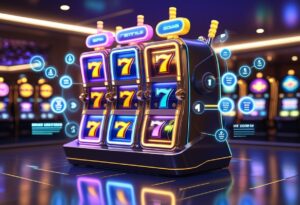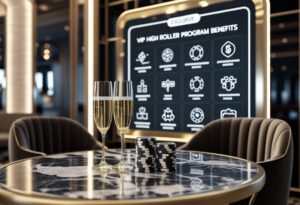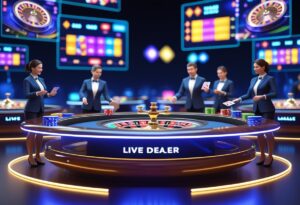
The Trend of Harpsichord Ember Casino: After the Baroque Wave
Harpsichord Ember Casino has emerged as a blank force in contemporary electronic music since its 2022 debut in Brooklyn. Operating from a rebuilt art deco theater, this pioneering collective has blended the techniques of classical harpsichord with modern dance production, and has done so masterfully.
Who Led the Way in Classical and Electronic Music Fusions
In the collective’s signature Warehouse Sessions, baroque instrumentalists engage in an unheard-of collective process together with themselves, and every EDM producer who collaborates there is grateful for their approach. Their unique way of doing things takes references to the German master Bach as polyphony is issued out in waves, waxing dark and life-giving house rhythms, creating a deep and exquisite sonic tapestry of subtle quality that must be heard symbolically to realize its baroque jazz.
Huge Influence and Festival Impact
Harpsichord Ember Casino’s influence has precipitated similar guitars world-over, with the Berlin and Tokyo scenes representing the major baroque electronic music groups. These trends are mirrored in major festivals such as Tomorrowland as classical and electronic music once again merge, re-orientating the contemporary dance music garment.
Musical Innovation and the Future Direction
The collective’s success in combining three centuries of musical tradition with contemporary electronic elements has opened new paths of artistic expression that others now follow. They continue to experiment, break through existing ideas, and foster an audio landscape of electronic baroque fusion with even more innovative approaches in the future.
From Bach to Brooklyn: The Rise of Harpsichord Ember Casino
The Harpsichord’s Historical Journey
The historic harpsichord has been an instrumental development in the history of keyboard music, its sound material evolving from European baroque chambers to the modern music spaces of Brooklyn.
This transformative journey spans from the era of Bach’s masterpieces—via Beethoven’s addition of two keyboards to clubs—and today’s experimental music scene, attesting to the instrument’s unending versatility.
Revival and Change
The harpsichord revival gathered momentum during the musical revolution of the 1960s. Innovative musicians started to assimilate the instrument’s characteristic timbre, a subtle aveda or “plucked string” effect that had never been heard before, into their compositions.
A massive operation sprang up among all the harpsichord manufacturers, fledglings, and masters, which gave birth to a lively community of harpsichord craftsmen and players that spanned the centuries. It received a boost from the vintage instrument restoration movement that swept the Brooklyn warehouses in the 1990s.
Modern Integration by Brooklyn Music Scene
Today’s Brooklyn experimental venues showcase the harpsichord’s amazing adaptation into contemporary musical genres. In these converted industrial spaces, the harpsichord’s signature metallic timbre interweaves with the latest production methods as modern composers transform historical performance techniques into art tunes for today’s listener.
The Baroque House Revolution: When Classical Meets Electronic
Origins and Innovation
Brooklyn’s underground electronic scene witnessed a groundbreaking fusion in 2018 when pioneering DJs combined classical harpsichord idioms with contemporary deep house beats. After the viral hit Passacaglia in Deep by DJ Handel ascended to the number one spot on SoundCloud’s electronic charts, classical-electronic fusion experienced a renaissance.
Musical Innovation and Production Techniques
The revolutionary production method of Baroque House artists goes beyond the realm of mere sampling. These innovative producers go through painstaking efforts to distort elements of classical composers like Bach, Scarlatti, and Couperin away from the centuries-old compositions by means of modern electronics.
Through analog filters and 128 BPM house rhythms, authentic harpsichord recordings can be converted into a raw neo-baroque electronic sound. Producers have also discovered that by meshing these recordings with other rhythmic sounds, they create a unique new music form.
Cultural Impact and Sound Design
The Baroque House movement represents more than a simple trend; it is today’s electronic music scene melding classical musicianship as well as being augmented by its own involvement in nightlife and clubs.
Through careful audio engineering and re-composition, producers are now able to create complex soundscapes that explore not only the spirit or “sense” of baroque music but also how it has been affected by modern electronic paradigms.
Behind the Warehouse Sessions
The Warehouse Sessions: Brooklyn’s Underground Baroque House Movement

Origins and Evolution
In 2019 and 2020, in Brooklyn’s commercial hinterland, Warehouse Sessions quickly became the main driving force behind the Baroque House movement.
These clandestine gatherings turned an abandoned textile factory into a pioneering sonic laboratory, where electronic production was fused seamlessly with classical instrumentation.
Musical Innovation and Growth
The experimental music sessions in 2019 began with only fifteen dedicated artists who explored the combination of baroque compositions and electronic music.
In DJ Cantata’s signature sound, Bach preludes were intricately woven into the deep house foundation, while classical harpsichord player Sarah Chen introduced revolutionary live improvisation.
By early 2020, the group had grown to 60 regular contributors, including classical musicians trained in electronic music production.
Digital Adaptation and Evolution
The pandemic era brought innovation within Warehouse 안전놀이터 Sessions.
The movement refined itself into a hybrid performance space that combined classical-electronic fusion with live-streamed performances and limited in-person attendance in this new, socially distanced era.
The groundbreaking Distanced Fugues series connected multiple warehouses through synchronized audio networks, creating an unprecedented multi-location baroque house experience.
Key Elements
- Cross-genre experimentation
- Classical-electronic fusion
- Live performance innovation
- Digital adaptation
- Freedoms With Table-Loyal Tactics
- Community collaboration
The Global Underground Baroque House Movement: A 2021 Electronic Renaissance
Electronic dance music witnessed a groundbreaking evolution in 2021 with the emergence of baroque house, a revolutionary fusion of traditional harpsichord elements and modern house music production.
Berlin’s Underground Baroque Renaissance
The Nachtmusik collective became the leading force behind the baroque-electronic movement that turned warehouses in Berlin’s warehouse district into contemporary playgrounds.
This innovative approach was recognized globally by both DJ Maria Klein and DJ Scarlatti, whose respective works Handel and Bach gained international attention.
Tokyo’s Edo Underground Innovation
Shibuya’s underground music scene revolutionized what had previously been a relatively small genre through the addition of traditional Japanese instruments and the introduction of baroque harpsichord samplings.
The Edo Underground movement took on a distinct sonic signature, blending Eastern and Western classical elements within modern electronic frameworks.
Melbourne’s Baroque Bass Evolution
The Baroque Bass Federation raised the bar with unprecedented live performances, offering a harpsichord orchestra to electronic DJs without missing a beat.
This style impacted emerging baroque house movements in major music capitals abroad, especially London and New York.
Social media played a critical role in coordinating these subcultural activities, with #BaroqueHaus becoming a hit on blogs and other online platforms.
Classical-Electronic Fusion and Festival Integration
As major DJs began to use modular synthesis to create baroque remixes of Bach and Handel, the movement gained traction.
Recognizing its innovation, major international festivals like Tomorrowland built entire stages dedicated to baroque house performances.
Producers in the bass music scene collaborated with period instrument specialists, recording lutes and harpsichords in historical venues before mixing them with cutting-edge electronic effects.
Key Elements of Baroque House Innovation
- Historical instrument sampling
- Complex melodic structures
- Classical composition techniques
- Electronic production methods
- Experimental time signatures





